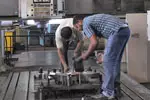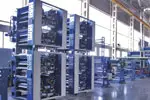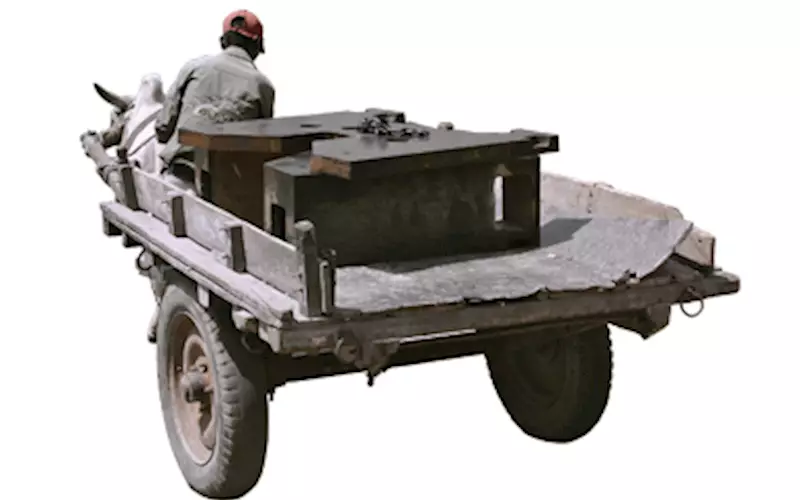Delhi NCR: Print avoids manufacturing headache
Alok Singh and Ramu Ramanathan speak to top players in Faridabad and Ballabhgarh and realise they are determined to remedy the mistakes of the past - and introduce the best of print technologies
27 Apr 2011 | By Samir Lukka
Paul whose company has a long-term association with Taneja says: "It is becoming increasingly difficult for print persons to take out time for programs that last for more than a day. Also, in the hurly burly of the day-to-day activities, we forget to implement the concepts that they learnt and believed in. So why waste everybody’s time? The need of the hour is delivering management and motivational seminars with an interesting perspective which will highlight the advantages."
APL is on a 100% growth path. Its raft of UV products has witnessed 6,000 installations in India. It’s eyeing a turnover of Rs 50-crore in the next year. This is the big story in NCR.
The manufacturing sector in NCR (Gurgaon, Noida, Ghaziabad and Faridabad) is seeing a boom. The Census 2011 is an indicator. Gurgaon has seen a population percentage growth from 2001-11 of 73.9% (population is: 1,514,000). Noida has seen a population percentage growth from 2001-11 of 51.2% (population is: 1,675,000). Ghaziabad has seen a population percentage growth from 2001-11 of 46.6% (population is: 4,661,000). And Faridabad has seen a population percentage growth from 2001-11 of 31.8% (population is: 1,799,000). This has meant cheap labour due to a steady influx of migrants and improved infrastructure.
TPH develops a new model
The Printers House (TPH) in Ballabhgarh is part of the boom. M M Kohli, the director of the firm, says: "Abolition of industrial licensing in the early nineties encouraged investment on the basis of entrepreneurship."
According to Kohli, the reasons of the boom were three. Firstly, print demand was expanding. India had a stock boom which was created by a small number of companies with good performance. Investment has the same character. Secondly, imports rose, and even when they were stagnating or decreasing, TPH didn’t suffer because of domestic demand.
Today domestic demand at TPH dominates with 70% of the capacity utilisation. And thirdly, most print companies invested in technology which raised output. A case in point is TPH which in April 2010 commissioned the Okuma MCR (in the picture). This is a 5-axis CNC heavy duty equipment and has phased out the older CNC machines. It ensured cycle times are reduced from 70 to 30 hours. The key reason is: 120 tools can be loaded at one time.
TPH has benefitted through a partnership with Goss, and now KBA. This means they have greater potential for knowledge transfer through technological spillovers. This has given TPH an advantage over 25 Indian web offset manufacturing factories on not only product and process technology, but also management and marketing skills.
Kohli provides an interesting insight when he says, "The downturn in the past two years was the best time to invest". He adds, "TPH had the time to invest and create a product and maintain sensible pricing. We provided high reliability and quality assurance. And maintain delivery schedules."
Giant strides at KK Printing
A similar saga is being enacted at KK Printing Machines, where its managing director, Sanjay Gupta is bullish. His firm has entered into a tie up with Seiken Graphics, the third largest web offset firm in Japan after Mitsubishi and TKS. The contract (signed a few days prior to the Tsunami strike in Japan), enables KK Printing to have access to web offset presses with the super panorama system, a device that enables presses to print a four-colour centre-spread.
The Chennai-based The Daily Thanthi has begun printing on India’s first Seiken Type 65 offset press. The second Seiken press is on its way.
Gupta is very pleased with the new plant in Ballabhgarh which has 90,000 sq/ft constructed space. The plot was procured four years ago; and since last April, the production is full steam ahead. Gupta wants to "double production".
A walk through the plant is a good indicator as there are two press lines ready to be despatched. Gupta points out to the array of four Hi-Towers and says, "The game has changed. Today Indian newspapers are demanding auto-pasters, pneumatically controlled and digital systems."
He adds: "With a total of 325m readers, India’s newspaper industry generated $US3.8 billion ($3.82bn) in sales last year. Moreover, that figure is set to rise by 9% every year over the next four years to $US5.9bn, helped by a rising literacy rate, from a present 68% (compared with 99% in the UK) and a rising population of 1.2bn that is expected to increase by a further 100m people by 2020."
Required: A reform for spare parts
Kohli is clear that the Indian manufacturer should be proud of their achievements, but he asks, "for how long are we going to call ourselves a developing third world country! China scores due to their factories which produce high quality ancillaries."
In contrast, India suffers. Says Kohli: "We import from Europe. The European manufacturing model of 50 Euros per hour and 30 hours a week is unviable. The time is ripe for India to reverse engineer and create critical parts in India"
Kohli admits, "We’ve to develop our ancillary equipment supply chain." To manufacture high-value web offset presses, the companies need parts and components. Most of these are procured from the local market. This includes 400 vendors in and around Faridabad who supply non-critical parts.
India has a policy to protect the small sector. But the policy has hindered small-scale industries from improving their technological capabilities. With the advent of world technology, India has to develop ancillary kit. There is no other go.
Kohli agrees and unleashes a few out-of-the-box solutions. "Let Indian entrepreneurs take over an European engineering factory. Today, most European plants are available for a song. Indian companies have created chilling systems, plate benders and UV machines, but we need more. India needs pre-press systems and remote motorised inking systems."
Kohli adds: "All it requires is two bright IIT kids to tweak the systems. They can design and develop top-class ancillary products that can be fitted to the Indian presses."
It’s clear, a backward linkage is the most efficient channel for technology spillover. One way is: for Indian sub-contractors to accumulate technology specific skills. As well as economies of scale. But who will the first to bell the cat?

The Printers House
The Printers House had a good start to 2011. During the PrintPack show in New Delhi, it announced orders for 43 four hi-towers, six three-colour satellites with stack units, three mono units and 14 folders. More than 75% of the ordered printing modules are of Orient X-Cel (36,000 cph) and the balance being of Orient Super (30,000 cph). The R&D team at TPH has provided a huge thrust to UV printing on coldset presses. In addition, the TPH team is working on combinations like 1:2:2 and 2:2 to better the creasing and folding options.

KK printing machines
The focus at KK Printing factory is on the the induction of CNC, computerised cylinder balancing and deep boring machine. The aim is to breach the 45,000 cph mark. For starts the firm has invested in Okuma CNC kit and five licenses of SolidWorks. The company is looking at 200 units of four hi-towers, 100+ 3 C&Stacks and 100+ folders. The restructuring will enable the unit to achieve 30% growth. Sanjay Gupta says: "The Indian print industry has much potential to grow. We are expecting great growth in this industry in 2011-2012."

APL MAchinery
C P Paul of APL (in the picture) is very pleased due to the recent assignment in which they have installed a 72 inch system on a rotagravure press at RMCL (Rudrapur and Daman). In addition they are buoyant about screen printing and UV applications. Especially the recently launched double-station UV coating model. To-date, the company boasts of 6,000 installations in India. Plus they are hoping to increase the 20% export pie. This is one of the reasons, they have booked a stall at Drupa 2012, to facilitate outreach in Europe.














 See All
See All